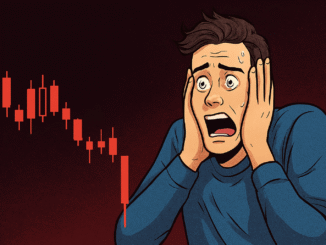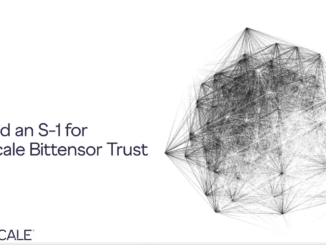
Tenex, also known as 10x or Tenexium, is a subnet representing a pioneering step in DeFi, tailored specifically for the Bittensor ecosystem.
Unlike traditional Bittensor subnets that focus on AI services like machine learning models or data processing, Tenex functions as a decentralized long-only spot margin protocol.
“Ever felt like ‘I want to buy more, but my bag is too small’? Say goodbye to that! 🎉 You can now buy more than you have, with borrowed funds from Tenex protocol’s pool. That’s right, leverage up to 10x on alphas! 📈”
Its primary goal is to provide sustainable liquidity for TAO while enabling leveraged exposure to subnets’ alpha tokens. This allows traders to amplify their positions on promising subnets without the risks associated with shorting.
By addressing liquidity challenges and introducing leverage mechanics, Tenex aims to enhance the overall health and growth of Bittensor’s decentralized intelligence markets.
Launched by the taomind team (now operating under Tenexium), Tenex is set to go live on mainnet on September 9, 2025, marking a significant milestone for Bittensor’s integration of DeFi elements.
The project emphasizes risk management and ecosystem sustainability, positioning itself as the first margin protocol in Bittensor designed to boost subnet token demand through leveraged longs and automated buybacks.
How Tenex Works
Tenex operates as a margin trading platform built natively on Bittensor, using smart contracts to facilitate interactions. The protocol is modular and upgradeable, employing a UUPS proxy pattern for secure updates.
Here’s a breakdown of the mechanics:
Liquidity Provision
Liquidity providers (LPs) deposit TAO into a TAO-only pool. In return, they earn Bittensor miner emissions plus 30-35% of protocol fees from trading, borrowing, and liquidations. This design shields LPs from alpha token volatility, focusing rewards on stable TAO yields.
Trading and Leverage
Traders deposit TAO as collateral to borrow additional TAO and open leveraged long positions on subnet alpha tokens. Leverage is tiered, starting at 2x for basic users and scaling up to 10x based on holdings of Tenex’s own alpha token. Positions are managed on-chain, with health ratios monitored (initial margin at 120%, maintenance at 110%).
Liquidations and Risk Management
If a position’s health ratio drops below 110%, it triggers liquidation. Liquidators execute this, earning 40% of the 2% penalty fee, while the remainder supports LPs and the protocol. The system includes circuit breakers like utilization caps and rate limiting to prevent exploits.
Fee Structure and Buybacks
Fees are dynamic—0.3% for trading (with tier discounts) and 0.005% per 360 blocks for borrowing, adjusting based on pool utilization. Notably, 90% of protocol fees fund automated buybacks of Tenex alpha tokens, with a 3-month cliff and 12-month vesting, creating sustained demand.
All operations integrate with Bittensor’s precompiles for staking, ensuring seamless compatibility. The protocol’s long-only focus avoids artificial sell pressure, promoting healthier markets.
Key Features
Tenex stands out with several unique attributes:
- TAO-Only Liquidity: Eliminates exposure to volatile alpha tokens for LPs, making it attractive for conservative yield seekers.
- Tiered Leverage System: Gated by Tenex alpha holdings, encouraging token accumulation and aligning incentives.
- Automated Buyback Program: Drives alpha token value through fee redistribution, potentially creating a “money printer” effect if volumes scale.
- Safety Mechanisms: Includes emergency pauses, audits (ongoing with CertiK/Zellic), and reentrancy protection.
- Native Integration: Built directly on Bittensor, leveraging its consensus for secure, decentralized operations.
Benefits for the Bittensor Ecosystem
Tenex addresses key pain points in Bittensor, such as shallow liquidity and limited trading options for alpha tokens. By enabling leveraged longs, it boosts demand for subnet tokens, fostering stronger markets and incentivizing development.
LPs gain new yield opportunities without added risk, while traders access high-conviction plays on emerging subnets.
Broader impacts include healthier TAO liquidity, reduced sell pressure from shorts, and enhanced capital efficiency. As Bittensor scales—with subnets like Oceans (SN66) routing liquidity—Tenex could capture significant volume, potentially generating thousands in daily fees for buybacks.
This aligns with Bittensor’s vision of a decentralized AI economy, where financial tools accelerate intelligence commoditization.
Risks and Safety Measures
Leveraged trading inherently carries risks, including potential losses exceeding initial investments.
Early-stage volatility in alpha tokens, combined with low liquidity, could amplify drawdowns. The protocol is under audit, and users are advised against depositing significant funds until completion.
To mitigate this, Tenex incorporates utilization caps, dynamic fees, and emergency controls. Its long-only design prevents manipulative shorts, and the team emphasizes transparency via GitHub and upcoming whitepapers.
How to Participate
Pre-mainnet, interested users can review the GitHub repository for code and setup instructions.
Once live on September 9, participation involves:
- For LPs: Deposit TAO via CLI tools or interfaces to earn yields.
- For Traders: Stake TAO, select leverage tiers, and open positions on alpha tokens.
- For Liquidators: Monitor and execute undercollateralized positions for fees.
Alpha tokens can be swapped directly on Bittensor using wallets or dApps, with on-chain tracking for transparency.
Community channels like Discord and X provide updates.
Future Outlook
As Bittensor’s ecosystem matures—with increasing subnet launches and capital inflows—Tenex is poised for growth. Potential expansions include short positions once liquidity deepens, and integrations with other DeFi tools. With strong alphanomics and a focus on sustainability, Tenex could become a cornerstone for Bittensor’s financial layer, driving adoption and value capture.
Early indicators, like rising volumes in similar subnets, suggest upside for patient participants.




Be the first to comment